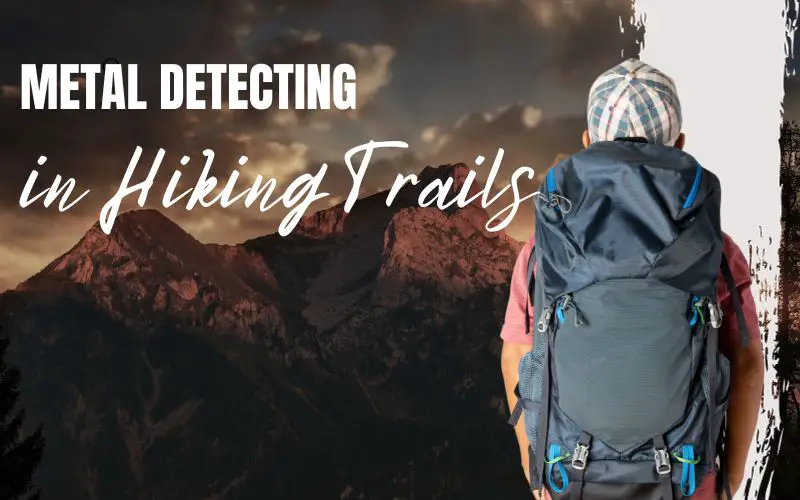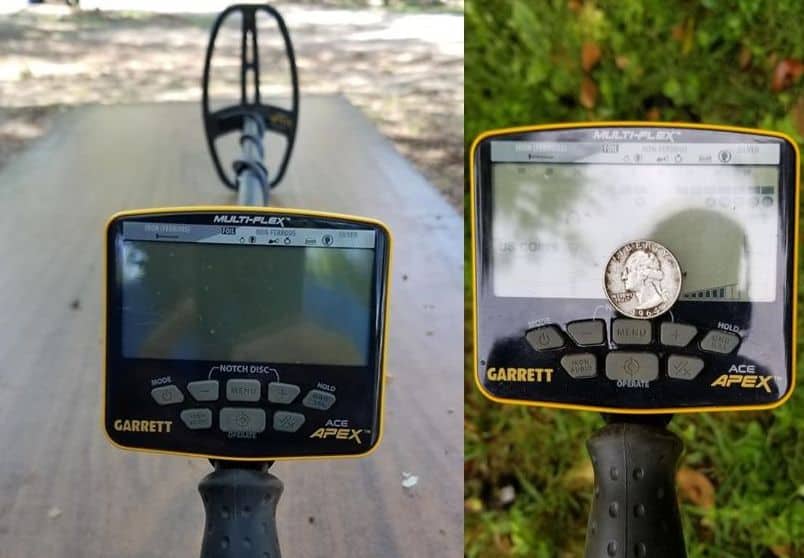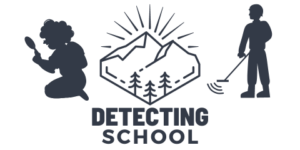
Metal detecting along hiking trails can lead not only to exciting finds but also unique and memorable adventures … Indeed, these paths have been traveled by so many people over the years.
In this short read, I address the potential treasures you can possibly find in these trails … I also discuss the best practices you should have in mind to be successful …. Since your safety is very important, I share some important safety tips.
If that sounds good, Let’s dive in!
Key Takeaways
- Hiking trails are perfect for metal detecting due to their high traffic and historical routes.
- To choose the right trails you should study its related history and have a good enough understanding of local regulations.
- Essential gear for trail metal detecting could be longue. Yet you can rely mainly on a versatile detector, a sturdy backpack, GPS as well as some digging tool.
Why should you metal detect on hiking trails?
There are several reasons why you should opt for hiking trails as a metal detecting destination:
- High Traffic: Since hiking trails attract so many visitors, chances of finding lost items like coins and jewelry is very high.
- Historical Significance: Some trails follow old routes … This could possibly yield some historical artifacts!
- Accessibility: Unlike places like parks, trails are often kept clean … This makes detecting much easier.
- Natural Beauty: Hiking trails are (in most cases) surrounded by beautiful natural landscapes. This makes the hobby even more enjoyable.
- Health Benefits: Hiking while metal detecting is a great way to exercise. You can’t imagine the health benefits this will have unless you try it yourself.
Please, be sure to respect trail rules and always practice “Leave No Trace” principles … This is important to help preserve the environment and keep the good reputation for this hobby.
How to research and select the best trails for metal detecting?
When it comes to hiking trails, there is a Ton! That’s why it is necessary to learn how you can research and select the best ones:
- Historical Research: Investigate the history of the trail you are targeting. Were they used during significant historical events? Indeed, there are some trails that have been a major route during colonial times, Civil Wars or other significant historical periods. This makes them highly rich in terms of potential historical finds.
- Online Forums and Groups: Online communities (I personally like fb groups) can provide unique insight about trails you intend to visit. This usually comes in terms of people sharing some of their experiences and tips.
- Local Regulations: In most cases, each trail has its own regulations that you need to check carefully. Some areas allow the activity, while others don’t. For example, national parks usually prohibit metal detecting.
- Popularity of the Trail: High-traffic trails may provide modern finds like jewelry. I generally recommend returning finds to their original owner when the latter is reachable.
- Ease of Access: Is the trail easily reachable? Is the terrain manageable? If the answers are No, No, then you probably should pass on this one on to the next.
- Trail Condition: This is up to you, but keep in mind that well-maintained trails are easier to detect!
Metal detector recommendation for hiking trails …

The Garrett Ace Apex (Check it Here at Amazon) is lightweight and pretty easy to use making it ideal for hiking trails …
It comes with the legendary Multi-Flex technology … This technology offers multi-frequency options for optimal detection of a variety of metals all at the same time.
The iron Audio feature is reliable and can filter out unwanted iron junk, helping you to focus on more valuable finds.
It also has ground balance that can adapt to various soil types that you can possibly encounter on trails.
Lastly, it is worth mentioning that the machine interface is user-friendly and has a large backlit display. This will give you a solid user experience.
Keep in mind that the Garrett Apex is one of the most advanced metal detectors in the market!
Important techniques for detecting along hiking trails
Now, after you’ve learned how you can properly research areas of interest, then you need now to learn about some techniques to help you be more efficient while detecting. Below some practical tips:
- Prioritize High-Traffic Areas: In metal detecting, momentum is very important. In other words, you should opt for trails with historical landmarks or popular recreational spots first where the probability of finding valuable targets is pretty high. This will give you the initial momentum that you’ll need to carry on to the next trails that could be less popular.
- Early Morning or Late Evening Detecting: These times usually have less foot traffic, allowing you uninterrupted detecting.
- Use Pinpointer: This tool is useful to narrow down the location of a find … This minimizes your digging efforts.
- Walk Slowly and Methodically: Always keep in mind that Metal detecting is not a race. Covering the smaller area thoroughly will increase your chances of successful finds.
- Leverage Terrain: Take advantage of natural and man-made landscape features to guide your search. In fact, people usually lose their items near benches, trail markers or interesting landscape features.
Important Safety considerations …
Hiking trails are generally safe (well, this depends on which park, state or country you are) … Yet, you should take into consideration these safety measures:
- Weather and Terrain: Always check the weather beforehand and be mindful of trail conditions. Keep in mind that wet or uneven surfaces can be slippery.
- Proper Gear: Wear sturdy shoes and clothing suitable for the weather. Gloves can protect hands from sharp objects. Carry a first-aid kit for emergencies.
- Hydrate and Snack: Metal detecting can be physically taxing in some specific ground condition types. That’s why it is highly recommended to bring enough water and snacks to maintain your energy levels.
- Inform Someone: Please let someone know where you’re going and when you expect to return. You never know what might happen …
- Wildlife: Some animals may pose a risk! Be careful and mindful …
- Know the Law: Please ensure you have the required permissions and you follow local rules and regulations for metal detecting. You will make sure you’ll stay out of any unnecessary trouble!
Equipment and gear for hiking trail detecting
Below are couple of tools you might need during your adventure …
- Hiking Poles.
- GPS/Mapping App.
- Portable Charger.
- Headlamp/Flashlight.
- Multi-tool.
- Insect Repellent.
- Finds Pouch.
- Digging Tool.
Final Thoughts …
You’ve probably noticed the wealth of opportunities that hiking trails can offer a for metal detecting enthusiasts … Hopefully, this will make you excited to get started!
However, I highly recommend you stick to the tips and guidelines I’ve shared … This will put you on the right path to uncover these hidden treasures while enjoying the great outdoors.
Finally, I highly invite you to learn how you can metal detect and camp at the same time!
